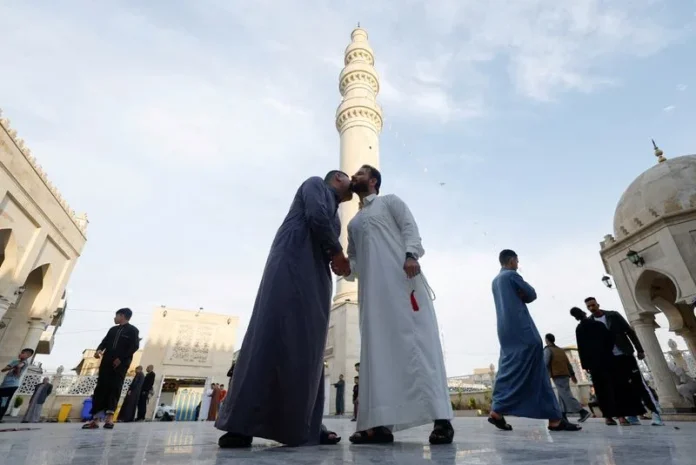MOSUL, Iraq (Reuters) – The simple act of watering flowers on a quiet street in Mosul’s Old City stirred profound reflections in Saqr Zakaria, highlighting the stark transformation of the city since its liberation from Islamic State militants in 2017.
“I thought for a second, ‘where am I?'” said Zakaria, who returned to Mosul in 2018 to establish the Baytna Foundation, a cultural center aimed at reviving the city’s spirit, despite the presence of thousands of bodies still being cleared from the ruins. Zakaria had left Mosul in 2005 but was drawn back to help restore its cultural identity.
The Grand al-Nuri Mosque, situated near Zakaria’s foundation, was once the site where the jihadist group declared its caliphate after seizing Mosul a decade ago.
The militants imposed a severe version of Islam, which involved killing minority group members, banning music, and destroying historical sites.
The west bank of the Tigris River, with its labyrinthine alleyways, became notorious for frequent killings, kidnappings, and crime, especially after the 2003 U.S.-led invasion.
The subsequent battle to reclaim Mosul left much of the city devastated and resulted in thousands of civilian casualties.
Despite ongoing political discord, corruption allegations, and reconstruction delays, life is gradually returning on both sides of the river. More than two dozen residents interviewed during a recent four-night visit expressed a sense of security not felt in the past two decades.
“Life consisted of eating and sleeping and locking your door so you’re not kidnapped or killed or blown up. We were deprived, and today we are making that up,” said Zakaria.
His foundation, housed in a traditional Moslawi home with an inner courtyard, has become a significant attraction for both local and international visitors, including French President Emmanuel Macron in 2021.
An elderly visitor to the Baytna Foundation, overwhelmed by nostalgia, wept at the sight of photographs depicting the city’s cultural and intellectual elite from better times.
“This is Mosul,” said Nizar Al-Khayat, a former school director in his 70s. “No matter what, it remains a cultured, civilized city.”
Local officials and residents acknowledge that much remains to be done to overcome the legacy of ISIS. Rubble continues to be cleared, and many buildings remain pockmarked and partially collapsed. The Old City, in particular, still lies in ruins.
However, signs of recovery are evident. New bridges span the river, and new restaurants serve Lebanese cuisine to patrons who enjoy the nostalgic music of Syrian tenors. The riverside souk and curbside cafes now buzz with activity late into the night, a stark contrast to the past when residents locked themselves indoors by late afternoon.
Firas al-Sultan, a technical adviser to Mosul municipality, noted that while the city is focused on restoring basic infrastructure, there is also an emphasis on expanding green spaces and tourist attractions, such as a new riverside corniche.
Efforts are also underway to restore monuments that reflect the city’s rich interfaith history. The Grand Nuri Mosque and the Al-Tahera Church, visited by Pope Francis in 2021, are among the notable sites being rebuilt.
The resilience of Mosul’s residents and the revival of its cultural heritage are testaments to the city’s enduring spirit, gradually transforming it from a war-torn landscape into a beacon of hope and renewal.
This article was created using automation technology and was thoroughly edited and fact-checked by one of our editorial staff members

